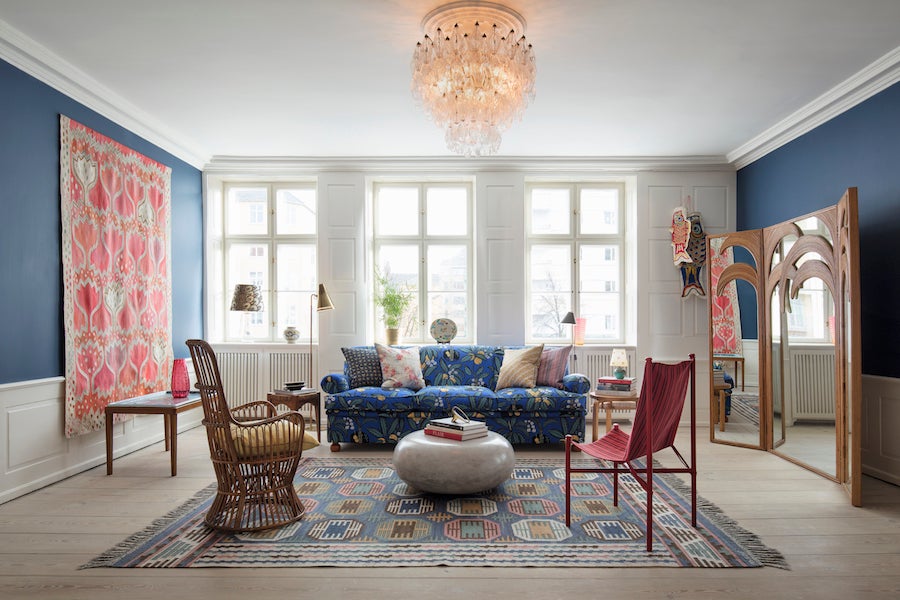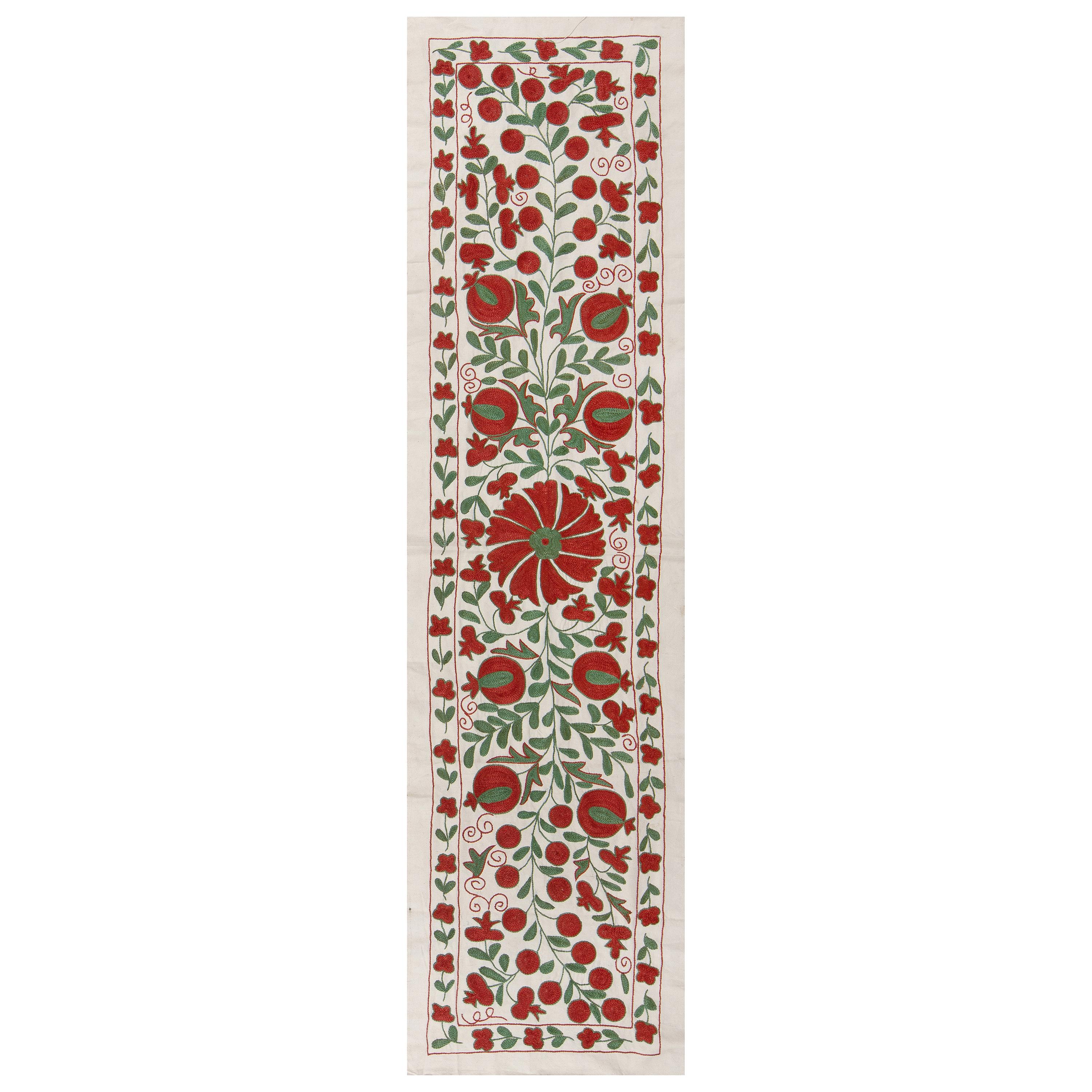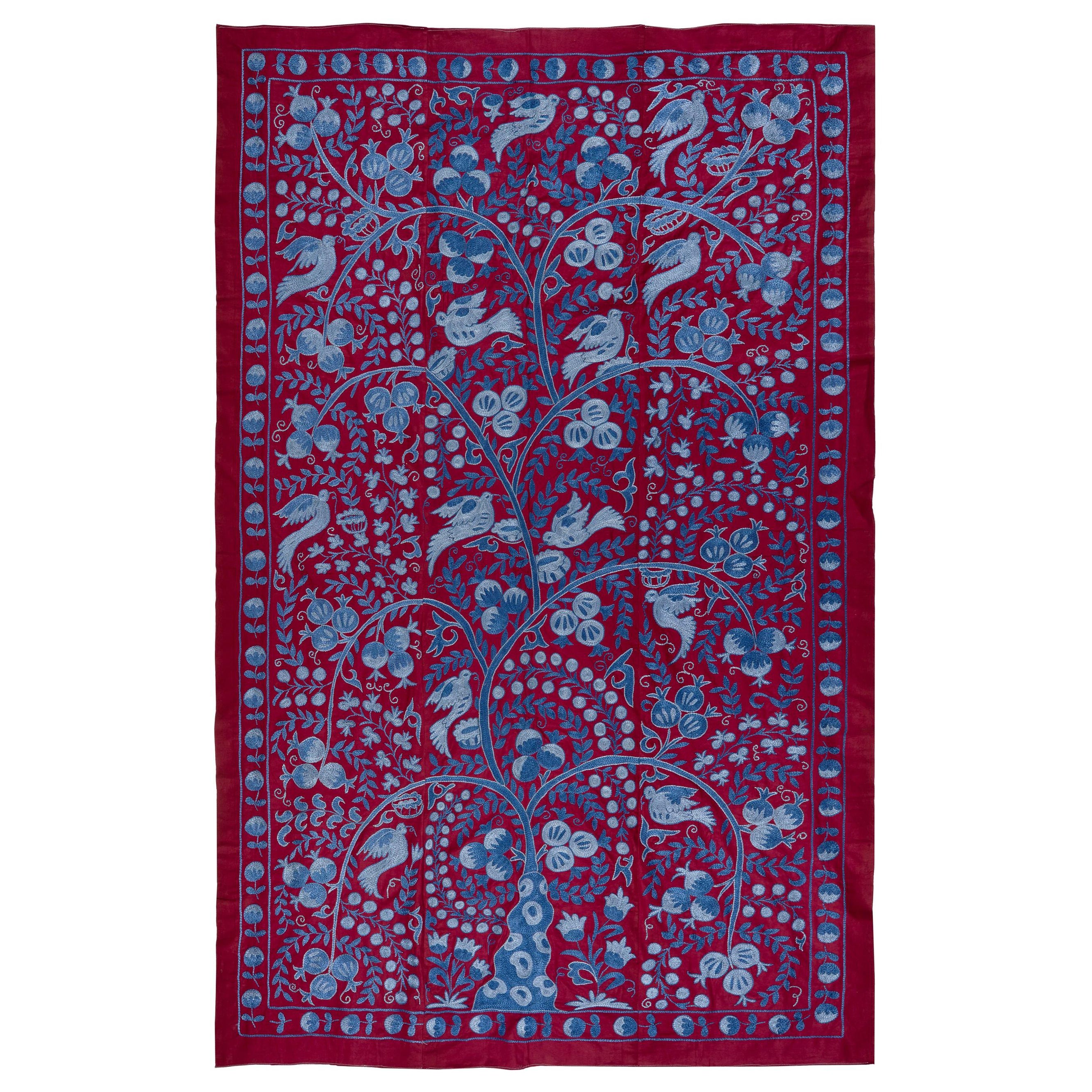Items Similar to Contemporary Handblock Printed Natural Dyed Yellow Cotton Tablecloth, India
Want more images or videos?
Request additional images or videos from the seller
1 of 6
Contemporary Handblock Printed Natural Dyed Yellow Cotton Tablecloth, India
About the Item
India, Contemporary
Handblock printed natural dyed cotton tablecloth.
H 273 x W 226 cm
- Dimensions:Height: 107.49 in (273 cm)Width: 88.98 in (226 cm)Depth: 0.02 in (0.5 mm)
- Materials and Techniques:
- Place of Origin:
- Period:
- Date of Manufacture:Contemporary
- Production Type:New & Custom(One of a Kind)
- Estimated Production Time:Available Now
- Condition:Wear consistent with age and use.
- Seller Location:Copenhagen K, DK
- Reference Number:1stDibs: LU1011236472752

About the Seller
4.6
Vetted Seller
These experienced sellers undergo a comprehensive evaluation by our team of in-house experts.
Established in 2011
1stDibs seller since 2013
193 sales on 1stDibs
Typical response time: 2 hours
- ShippingRetrieving quote...Ships From: Copenhagen K, Denmark
- Return PolicyThis item cannot be returned.
More From This SellerView All
- Vintage Blue and Yellow Block Printed Table Cloth, India, 1950sLocated in Copenhagen K, DKIndia, 1950s Block printed tablecloth. H 220 x W 240 cmCategory
Vintage 1950s Indian Textiles
MaterialsCotton
- Vintage Ottoman Block Printed Yazma Tablecloth, Turkey, Early 20th CenturyLocated in Copenhagen K, DKTurkey, Early 20th century Ottoman Block Printed Cotton Yazma Tablecloth. H 200 x W 175 cm.Category
Early 20th Century Turkish Textiles
MaterialsCotton
- Antique 'Boro' Blue Patched Textile, Japan, Late 19th CenturyLocated in Copenhagen K, DKJapan, Late 19th century Patched textile ‘Boro’. Measures: H 160 x W 117 cm.Category
Antique Late 19th Century Japanese Textiles
MaterialsCotton
- Vintage Handcrafted Patched Textile "Boro" in Indigo Dye, Japan, 20th CenturyLocated in Copenhagen K, DKJapan, Vintage Delicate handcrafted antique patched 'Boro' textile with detailed stitching. Likely used as a Furoshiki or duvet cover. 'Boro' are a ...Category
20th Century Japanese Textiles
MaterialsHemp
- Contemporary Gregory Parkinson Turquoise Hand-Blocked Tablecloth Ikat, USA, 2023Located in Copenhagen K, DKGregory Parkinson USA, Contemporary One of a kind tablecloth with hand-blocked patterns on Ikat textile. H 240 x W 150 cmCategory
2010s American Tableware
MaterialsTextile
- Contemporary Gregory Parkinson Tablecloth with Pattern on Ikat Textile, USALocated in Copenhagen K, DKGregory Parkinson USA, Contemporary One of a kind tablecloth with hand-blocked patterns on ikat textile. H 200 x W 135 cmCategory
2010s American Tableware
MaterialsCotton
You May Also Like
- 1.7x6.2 Ft Suzani Embroidered Cotton & Silk Wall Hanging, Decorative TableclothLocated in Philadelphia, PAIn the most technical sense of the word, "Suzani," in Central Asia and Iran, means needle and is used to describe this type of needlework, but to most people, such as decorators or c...Category
2010s Uzbek Suzani Textiles
MaterialsCotton, Silk
- 4.6x7 ft New Uzbek Suzani Tablecloth, Embroidered Cotton & Silk Wall HangingLocated in Philadelphia, PAIn the most technical sense of the word, "Suzani," in Central Asia and Iran, means needle and is used to describe this type of needlework, but to most people, such as decorators or c...Category
21st Century and Contemporary Uzbek Suzani Textiles
MaterialsCotton, Silk
- 5.4x8.6 ft Silk Embroidery Bedspread, Yellow Tablecloth, Suzani Wall HangingLocated in Philadelphia, PASuzani, a Central Asian term for a specific type of needlework, is also the broader name for the hugely popular decorative pieces of textile that feature this needlework in vivid col...Category
Late 20th Century Uzbek Suzani Textiles
MaterialsCotton, Silk
- Vintage Manila Shawl, Tablecloth Chinese EmbroideryLocated in Saint Ouen, FRBeautiful vintage Manila Chinese shawl embroidery, entirely hand embroidered with silk on silk, very decorative for shawl or tablecloth, circa 1930 good...Category
Early 20th Century Philippine Chinoiserie Textiles
MaterialsSilk
- Vintage Manila Shawl, Tablecloth Chinese EmbroideryLocated in Saint Ouen, FRVery beautiful Manila embroidery with a Chinese style and beautiful floral design, entirely hand embroidered with silk on silk foundation.Category
Mid-20th Century Philippine Chinoiserie Textiles
MaterialsSilk
- African Batik Cloth Natural Hand-woven Hand-Printed Cotton Fabric Ghana 10 YardsLocated in North Hollywood, CAAfrican Batik Cloth Natural Hand-woven Hand-Printed Cotton Fabric Ghana 10 yards. Colors are organic earth tone beige and light brown in geometric design. Non waxed fabric circa 1950s. Hand made in Ghana Africa. Museum Quality Original Long Piece. 380 inches, (30 ft 10 yards Long) x 46 inches Inches Wide( 4ft). Could be use to make pillows or upholstery. History of Batik in Africa: Batik, a traditional fabric art technique, has a rich history in Ghana, West Africa. The practice of batik involves using wax to create intricate patterns on fabric, which is then dyed to achieve the desired design. While batik has its origins in Asia, particularly in Indonesia, it has been embraced and adapted by various African countries, including Ghana. In Ghana, batik-making can be traced back to the mid-20th century when it gained popularity as a form of traditional textile art. The craft was introduced by artists and artisans who were inspired by the vibrant and expressive nature of batik. These early practitioners experimented with different designs, colors, and patterns, infusing local themes and motifs into their creations. Over time, batik became an important part of Ghanaian culture and identity. It is not only used for clothing but also for various decorative and functional items such as wall hangings, tablecloths, and accessories. The art form often reflects the rich cultural heritage of Ghana, incorporating symbols, proverbs, and traditional stories into the designs. Ghanaian batik artists often employ a combination of traditional and contemporary elements, creating a unique fusion of styles. The process of making batik involves applying hot wax to the fabric using various tools to create the desired patterns. The wax acts as a resist, preventing dye from penetrating the waxed areas. After dyeing, the wax is removed, revealing the intricate designs on the fabric. Today, batik-making in Ghana continues to thrive as both a traditional craft and a form of artistic expression. Many artisans and designers draw inspiration from Ghana's diverse cultural landscape, incorporating elements from different regions and ethnic groups into their batik creations. The art form has also gained international recognition, with Ghanaian batik products being sought after both locally and abroad. In summary, the history of batik in Ghana is a testament to the creativity and adaptability of artists who have embraced and transformed this traditional technique into a vibrant and culturally significant art form within the country. HISTORY OF BATIK In the mid-nineteenth century, the Belanda Hitam, or "Black Dutchmen," are said to have introduced batik to West Africa after serving as indentured soldiers for the Dutch in Indonesia. Returning from their conscriptions with trunks of fine Javanese batik, the opulent patterns captured the imagination of their friends and relatives. However, textile history is complex, and only a handful of recruits returned to West Africa with batik due to delayed payments. Batik, with roots traced to Egyptian mummies, is a tradition found globally, from Southeast Asia to Japan and India. Europeans, particularly the Dutch, played a significant role in industrializing batik from the seventeenth century onward. In West Africa, Dutch Scholar Ineke van Kessel suggests that batik arrived from India over trans-Saharan routes. Local populations, like the Yoruba in Nigeria, incorporated wax printing into their textiles. European traders brought wax and non-wax fabrics to West Africa in the seventeenth century, targeting a population ready for their consumption. European designers adapted prints for the African market...Category
Mid-20th Century Ghanaian Folk Art Textiles
MaterialsCotton
Recently Viewed
View AllMore Ways To Browse
Japanese Farmer Jacket
Antique Ottoman Vest
Pair Of Chinese Textile Panels
Chinese Embroidery Picture
Ikebana Book
Antique Burmese Kalaga Tapestry
Antique Burmese Kalaga
Chinese Kesi
Doorway Curtain
Uchikake Kimono
Korean Rank Badges
Sumatra Shawl
Framed Chinese Embroidery Panel Of Longevity Deities
Ottoman Turkish Vest
Spanish Flamenco Shawl
Antique Satin Bedspread
Flores Ikat
Hikeshi Banten





